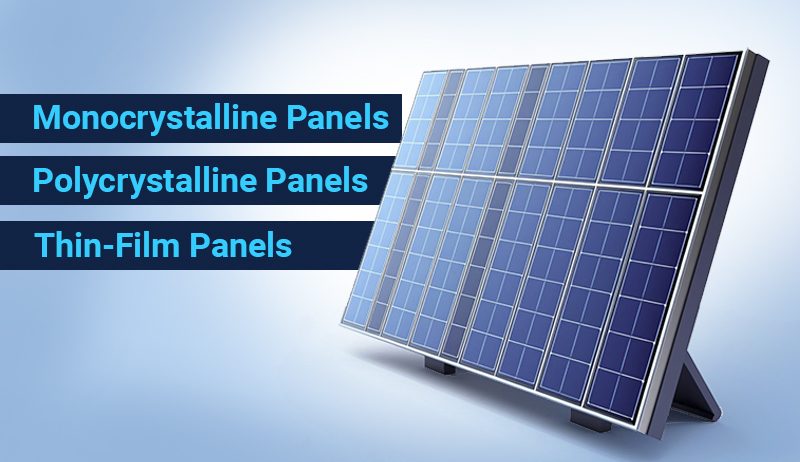Renewable Energy
Wind Energy 2025 Year in Review, Coal Surpassed
Weather Guard Lightning Tech

Wind Energy 2025 Year in Review, Coal Surpassed
Allen delivers the 2025 state of the wind industry. For the first time, wind and solar produced more electricity than coal worldwide. The US added 36% more wind capacity than last year, Australia’s market hit $2 billion, and China extended its 25-year streak of double-digit growth. But 2025 also brought challenges: the Trump administration froze offshore wind projects, Britain paid billions to curtail turbines, and global wind growth hit its lowest rate in two decades.
Sign up now for Uptime Tech News, our weekly email update on all things wind technology. This episode is sponsored by Weather Guard Lightning Tech. Learn more about Weather Guard’s StrikeTape Wind Turbine LPS retrofit. Follow the show on Facebook, YouTube, Twitter, Linkedin and visit Weather Guard on the web. And subscribe to Rosemary Barnes’ YouTube channel here. Have a question we can answer on the show? Email us!
Allen Hall: 2025, the year the wind industry will never forget. Let me tell you about a year of records and reversals of triumphs and a bunch of turbulence. First, the good news. Renewable energy has done something historic for the first time ever. Wind and solar produce more electricity than coal worldwide. The energy think tank embers as global electricity.
Demand grew 2.6% in the first half of the year. Solar generation jumped by 31%, wind rose nearly 8%. Together they covered 83% of all new demand. Coal share of global electricity fell to 33.1%. Renewables rose to 34.3. A [00:01:00]pivotal moment they called it. And in the United States, turbines kept turning wood.
McKinsey and the American Clean Power Association report America will add more than seven gigawatts of wind this year. That is 36% more than last year in the five year outlook. 46 gigawatts of new capacity through 2029. Even Arkansas by its first utility scale wind project online through Cordio crossover Wind, the powering market remains strong.
18 projects will drive 2.5 gigawatts of capacity additions over the next three years. And down under the story is equally bright. Australia’s wind energy market reached $2 billion in 2024 by. 2033 is expected to reach $6.7 billion a growth rate of nearly 15% per year. In July, Australian regulators streamlined permitting for wind farms, and in September remote mining operations signed [00:02:00] long-term wind power agreements while the world was building.
China was dominating when power output in China is on track for more than 10% growth for the 25th year in a row. That’s right, 25 years in a row. China now accounts for more than 41% of all global wind power production a record. And China’s wind component exports up more than 20%. This year, over $4 billion shipped mainly to Europe and Asia, but 2025 was not smooth sailing, as we all know.
In fact, global wind generation is on track for its smallest growth rate in more than 20 years. Four straight months of year over year. Declines in Europe, five months of declines in North America and even Asia registered rare drops in September and October. The policy wind shifted too in the United States.
The Trump administration froze offshore wind project work in the Atlantic. The interior [00:03:00] Department directed five large scale projects off the East Coast to suspend activities for at least 90 days. The Bureau of Ocean Energy Management cited classified national security information.
That’s right. Classified information. Sure. Kirk Lippold, the former commander of the USS Coal. Ask the question on everyone’s mind. What has changed in the threat environment? Through his knowledge, nothing. Democratic. Governors of Connecticut, Rhode Island, Massachusetts, and New York issued a joint statement.
They called the pause, a lump of dirty coal for the holiday season, for American workers, for consumers, for investors. Meanwhile, in Britain, another kind of problem emerged the cost of turning off wind farms when the grid cannot cope, hit 1.5 billion pounds. This year, octopus Energy, Britain’s biggest household supplier is tracking it payments to Wind farms to switch off 380 [00:04:00]million pounds.
The cost of replacing that wasted power with. Gas 1.08 billion pounds. Sam Richards of Britain remade called it a catastrophic failure of the energy system. Households are paying the price. He said, we are throwing away British generated electricity and firing up expensive gas plants instead. In Europe, the string of dismal wind power auctions also continued some in Germany and Denmark received no bids at all.
Key developers pushed for faster permitting and better auction terms. Orsted and Vestas led the charge. And in Japan soaring cost estimates cause Mitsubishi to pull out of three offshore projects. Projects that were slated to start operations by 2030. Gone. The Danish shore Adapting Ted, the world’s largest offshore wind developer sold a 55% stake in its greater Chiang two offshore Wind Farm in Taiwan.
The Buyer [00:05:00] Life Insurance Company Cafe, the price around $789 million. With that deal, Ted has signed divestments, totaling 33 billion Danish crowns during 2025. The company is trying to restore investor confidence amid rising costs, supply chain disruptions, and uncertainty from American policy shifts.
Meanwhile, the International Energy Agency is sounding the alarm director, Fadi Beal says Solar will account for 80% of renewable capacity growth through the end of the decade. And that sounds about right. So it’s got a bunch of catch up to do, but policymakers need to pay close attention. Supply chain, security grid integration challenges and the rapid rise of renewables is putting increasing pressure on electricity systems worldwide.
Curtailment and negative price events are appearing in more markets, and the agency is calling for urgent [00:06:00] investments in grid energy storage and flexible generation. And what about those tariffs? We keep reading about wood McKenzie projects.
Tariffs will drive up American turbine costs in 2026 in total US onshore wind capital expenditure is projected to increase 5% through 2029. US wind turbine pricing is experiencing obviously unprecedented uncertainty. Domestic manufacturing over capacity would normally push down prices, but tariff exposure on raw materials is pushing them up.
And that’s by design of course. So where does this leave us? The numbers tell the story. Renewables overtook Coal. America will install 36% more turbines. This year, Australia’s market is booming. China continues. Its 25 year streak of double digit growth, but wind generation growth worldwide is at its lowest in two decades.
And policy reversals in America have stalled. [00:07:00] Offshore development and Britain is paying billions to turn off turbines because the grid cannot handle the power. Europe’s auctions are struggling and Japan’s developers are pulling back and yet. The turbines keep turning. You see, wind energy has had good years and bad years, but 20 25, 20 25 may be one of the worst.
The toxic Stew Reuters called it major policy reversals, corporate upheaval, subpar generation in key markets, and yet the industry sees reasons to expect improvement changes to auction incentives, supply chain adjustments, growing demand for power from all sources. The sheer scale of China’s expansion means global wind production will likely keep hitting new highs, even if growth grinds to a halt in America, even if it stays weak.
In Europe, 2025 was a year of records and reversals. The thing to remember through all of this [00:08:00] is wind power is low cost power. It is not a nascent industry. And it is time to deliver more electricity, more consistency. Everyone within the sound of my voice is making a difference. Keep it up. You are changing the future for the better.
2025 was a rough year and I’m looking forward to 2026 and that’s the state of the wind industry for December 29th, 2025. Have a great new year.
Renewable Energy
Threats to America’s Health and Safety
 Those who are involved in science are concerned that American society is threated by misinformation.
Those who are involved in science are concerned that American society is threated by misinformation.
Of course, MAGA crowd, the antivaxxers, the climate deniers, etc. believe the opposite, i.e., the people like Anthony Fauci, who have dedicated their entire adult lives to human health, have suddenly become corrupt, and are profiting from fake science while destroying the U.S. economy.
Renewable Energy
ACORE Statement on the Department of Interior’s Action to Halt Fully Permitted Offshore Wind Construction Projects
ACORE Statement on the Department of Interior’s Action to Halt Fully Permitted Offshore Wind Construction Projects
WASHINGTON, D.C. — The American Council on Renewable Energy (ACORE) issued the following statement from ACORE President and CEO Ray Long in response to the Department of the Interior’s action to halt fully permitted offshore wind construction projects:
“Americans expect their government and private sector to work together to ensure that the lights stay on and their electric bills are affordable. The five East Coast offshore wind projects that have been paused should be a total success story: $28 billion in committed private sector capital, expanded port infrastructure, support for domestic shipbuilding, and 10,000 good-paying local jobs—all to support a more robust, affordable, reliable, and secure electricity resource base for decades to come. Given skyrocketing electricity demand forecasts and consumers’ clear concerns about affordability, projects like these need to get over the finish line to give people confidence that government and the private sector can still deliver on big things. Unfortunately, actions like this send the opposite message at exactly the wrong time.”
###
ABOUT ACORE
For over 20 years, the American Council on Renewable Energy (ACORE) has been the nation’s leading voice on the issues most essential to clean energy expansion. ACORE unites finance, policy, and technology to accelerate the transition to a clean energy economy.
For more information, please visit http://www.acore.org.
Media Contacts:
Stephanie Genco
Senior Vice President, Communications
American Council on Renewable Energy
communications@acore.org
The post ACORE Statement on the Department of Interior’s Action to Halt Fully Permitted Offshore Wind Construction Projects appeared first on ACORE.
https://acore.org/news/acore-statement-on-the-department-of-interiors-action-to-halt-fully-permitted-offshore-wind-construction-projects/
-
Greenhouse Gases5 months ago
Guest post: Why China is still building new coal – and when it might stop
-
Climate Change5 months ago
Guest post: Why China is still building new coal – and when it might stop
-
Climate Change2 years ago
Spanish-language misinformation on renewable energy spreads online, report shows
-

 Greenhouse Gases2 years ago
Greenhouse Gases2 years ago嘉宾来稿:满足中国增长的用电需求 光伏加储能“比新建煤电更实惠”
-
Climate Change Videos2 years ago
The toxic gas flares fuelling Nigeria’s climate change – BBC News
-

 Climate Change2 years ago
Climate Change2 years ago嘉宾来稿:满足中国增长的用电需求 光伏加储能“比新建煤电更实惠”
-

 Carbon Footprint2 years ago
Carbon Footprint2 years agoUS SEC’s Climate Disclosure Rules Spur Renewed Interest in Carbon Credits
-
Renewable Energy6 months ago
US Grid Strain, Possible Allete Sale





